There are four cultivated species of cotton viz. Gossypium arboreum, G.herbaceum, G.hirsutum and G.barbadense. India is the only country in the world where all the four cultivated species are grown on commercial scale. Cotton, a semi-xerophyte, is grown in tropical & sub-tropical conditions. A minimum temperature of 15oC is required for better germination at field conditions. Cotton is grown on a variety of soils ranging from well drained deep alluvial soils in the north to black clayey soils of varying depth in central region and in black and mixed black and red soils in south zone. Cotton is semi-tolerant to salinity and sensitive to water logging and thus prefers well drained soils.
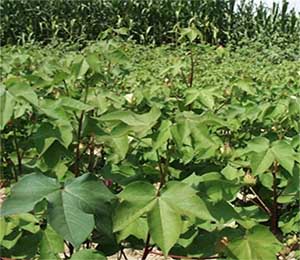
 Restricted shoot growth and spindly appearance of plants.
Restricted shoot growth and spindly appearance of plants.
 Older leaves at first turn yellowish green; under severe deficiency, the whole plant becomes pale green.
Older leaves at first turn yellowish green; under severe deficiency, the whole plant becomes pale green.
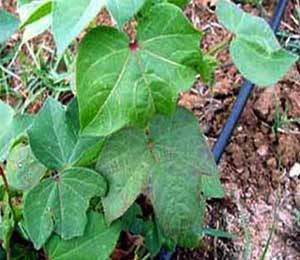
 Dark green stunted plants.
Dark green stunted plants.
 Small leaves and the symptoms first appear on the lower or older leaves and progress upward on the stalk.
Small leaves and the symptoms first appear on the lower or older leaves and progress upward on the stalk.
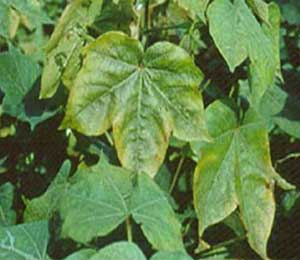
 Older leaves are chlorotic, droopy and have yellow spots between the veins the edges turn yellow then brown curt downward and die.
Older leaves are chlorotic, droopy and have yellow spots between the veins the edges turn yellow then brown curt downward and die.
 Brown spots appear between vein dry the margins and tip of leaves.
Brown spots appear between vein dry the margins and tip of leaves.
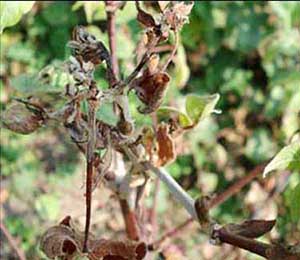
 Large plants and few fruiting forms.
Large plants and few fruiting forms.
 Crinkle leaf and poor root growth.
Crinkle leaf and poor root growth.
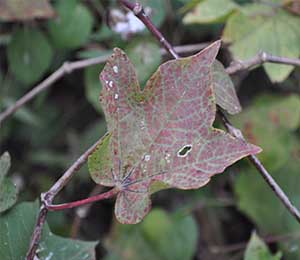
 Leaf cupping and interveinal chlorosis, veins remain green; starts in young leaves.
Leaf cupping and interveinal chlorosis, veins remain green; starts in young leaves.
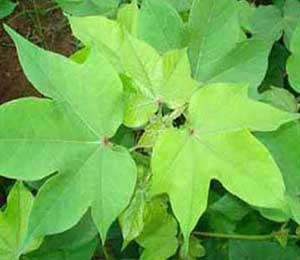
 Pale green to yellow colour of young leaves at the top leave green colour.
Pale green to yellow colour of young leaves at the top leave green colour.
 The plants are small and spindly with short, slender stalks.
The plants are small and spindly with short, slender stalks.
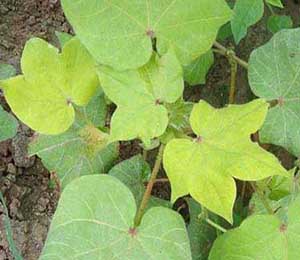
 Yellowing of cotton leaves at top of plant following irrigation.
Yellowing of cotton leaves at top of plant following irrigation.
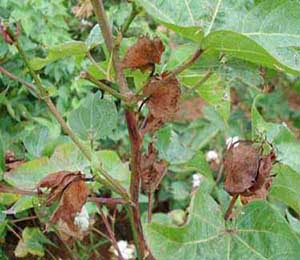
 Short leaf petioles with dark green rings.
Short leaf petioles with dark green rings.
 Excessive sheding of buds and young bolls.
Excessive sheding of buds and young bolls.
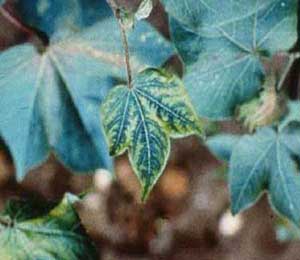
 Yellowing of cotton leaves at top of plant following irrigation.
Yellowing of cotton leaves at top of plant following irrigation.
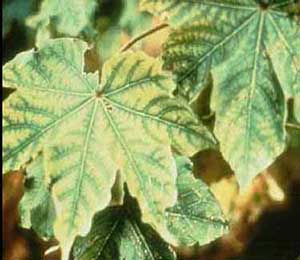
 Pronounced interveinal chlorosis differs from manganese in that leaves are more misshapen, tips of leaves elongated and parallel.
Pronounced interveinal chlorosis differs from manganese in that leaves are more misshapen, tips of leaves elongated and parallel.
 Both old and young leaves show red pigmentation; leaves lose normal green color of interveinal portions turn golden yellow color.
Both old and young leaves show red pigmentation; leaves lose normal green color of interveinal portions turn golden yellow color.